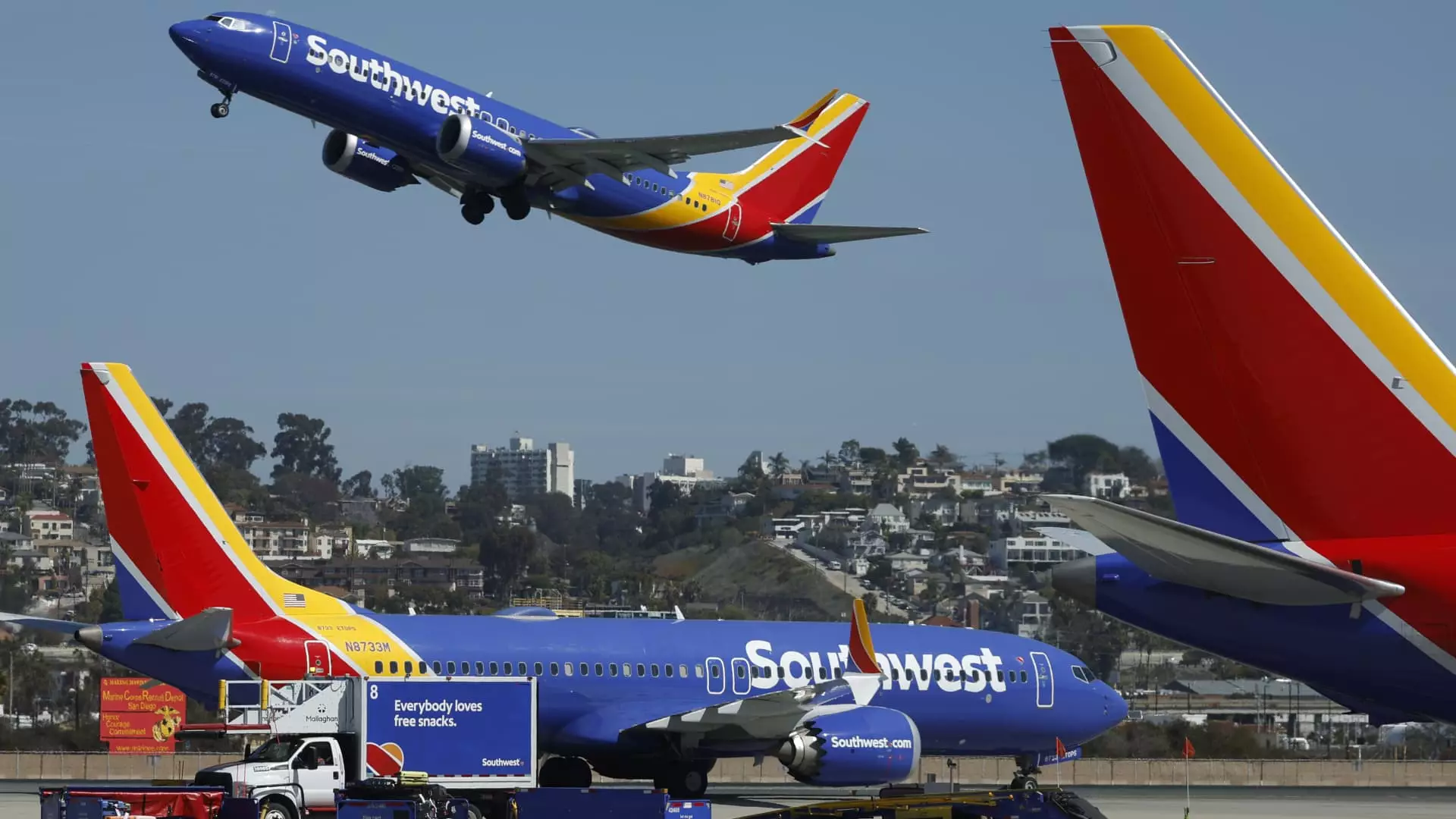Southwest Airlines, a beloved institution in the world of travel, is on the verge of redefining the passenger experience as it seeks to attract high-paying customers. CEO Bob Jordan’s recent comments reveal an ambitious strategy that embraces airport lounges, premium seating, and even the prospect of long-haul international flights. This transformation is not merely an evolution; it reflects a proactive response to shifting consumer expectations and competitive pressures in the airline industry.
Historically, Southwest Airlines has prided itself on its no-frills model and customer-friendly policies, which included free checked bags and an open seating arrangement. However, the landscape of air travel has altered dramatically, requiring a reevaluation of the offerings that once set it apart. As Jordan indicated during a recent interview, the airline recognizes that to keep pace with its rivals, it must adapt and innovate, acknowledging the preferences of a discerning clientele.
Luxury in the Sky and on the Ground
The pursuit of high-margin customers is driving Southwest to reconsider fundamental elements of its service model. Jordan pinpointed the growing demand for airport lounges and premium cabin experiences as key areas for development. Competitors like Delta, United, and American Airlines have made significant investments in this domain, and Southwest cannot afford to fall behind. Lambasting complacency, Jordan noted that to fulfill the desires of today’s travelers, the airline must evolve its brand identity while remaining true to its core mission.
Nashville International Airport, where Southwest boasts a commanding market share, serves as a microcosm for this transformation. Jordan emphasized that Nashville customers are increasingly craving the luxuries that typically draw them to other airlines—such as lounges and premium seating options. This desire, if left unaddressed, could not only result in lost revenue but also jeopardize the airline’s standing among elite travelers who could easily pivot to competitors offering the amenities they seek.
Competitive Pressures and Economic Landscape
The year has not been kind to the airline industry, with airfare prices dropping significantly and economic uncertainty looming large. In response, Southwest has prudently adjusted its forecasts and policies, including the introduction of basic economy tickets and baggage fees reminiscent of those offered by rivals. Remarkably, Jordan reported that this strategic pivot hasn’t led to a mass exodus of customers, indicating that while some may prefer low-cost options, many still remain loyal to the Southwest brand.
Yet, changing the narrative at the premium end is equally essential, particularly as airlines compete fiercely for the affluent flyer market. Travel trends suggest that once a passenger opts for luxury services with another airline, loyalty to brand can be swiftly entangled with perks such as co-branded credit cards. Jordan’s commitment to decreasing customer defection to competitors points to a larger goal: fostering a travel ecosystem where luxury and affordability can coexist.
Future Horizons: International Aspirations
While the immediate focus may be on domestic transformations, the prospect of international flights looms large on the horizon. Jordan hinted at the potential for Southwest to venture into long-haul travel, citing plans for partnerships with airlines that have already paved the way for routes to Europe. However, these aspirations hinge on acquiring aircraft capable of undertaking such journeys, an endeavor that would require a significant departure from the Boeing 737, which has been a mainstay of Southwest’s fleet for decades.
There is uncharted territory ahead, and while Jordan is careful not to rush commitments, his openness to adapting Southwest’s operational model is promising. The idea of a Southwest Airlines aircraft landing in a European city isn’t just fanciful thinking; it’s indicative of a broader shift towards globalization in the airline’s strategy.
Waiting on Innovation
As the airline world grapples with challenges and opportunities, Southwest finds itself at a crossroads. The anticipation surrounding the arrival of the Boeing 737 Max 7 is palpable, promising to add more capacity and efficiency to the fleet. However, delays in certification processes have cast a shadow over this development. As Jordan indicated, consistency in aircraft delivery is improving, but expectations need to be tempered as the airline navigates these challenges in the coming years.
What lies ahead for Southwest Airlines is not merely a timeline of incremental changes, but an era defined by innovation and adaptation to customer preferences. By focusing on the luxury segment while continuing to cater to its loyal base, the airline is positioning itself not just to survive, but to thrive in an increasingly competitive environment. The journey toward elevating the travel experience is fraught with challenges, yet it represents Southwest’s commitment to evolving alongside the modern traveler.


Leave a Reply